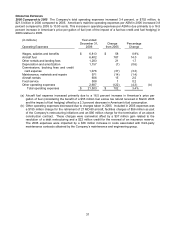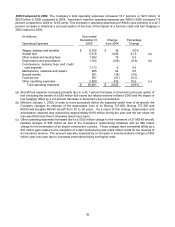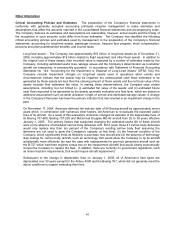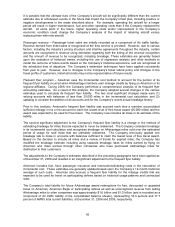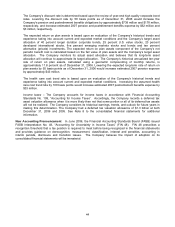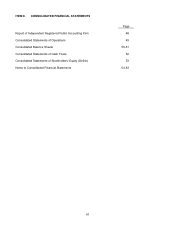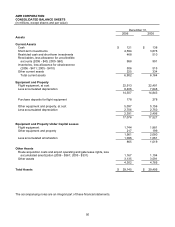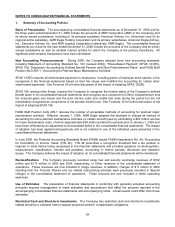American Airlines 2006 Annual Report Download - page 48
Download and view the complete annual report
Please find page 48 of the 2006 American Airlines annual report below. You can navigate through the pages in the report by either clicking on the pages listed below, or by using the keyword search tool below to find specific information within the annual report.44
The Company’s discount rate is determined based upon the review of year-end high quality corporate bond
rates. Lowering the discount rate by 50 basis points as of December 31, 2006 would increase the
Company’s pension and postretirement benefits obligations by approximately $738 million and $178 million,
respectively, and increase estimated 2007 pension and postretirement benefits expense by $62 million and
$3 million, respectively.
The expected return on plan assets is based upon an evaluation of the Company's historical trends and
experience taking into account current and expected market conditions and the Company’s target asset
allocation of 40 percent longer duration corporate bonds, 25 percent U.S. value stocks, 20 percent
developed international stocks, five percent emerging markets stocks and bonds and ten percent
alternative (private) investments. The expected return on plan assets component of the Company’s net
periodic benefit cost is calculated based on the fair value of plan assets and the Company’s target asset
allocation. The Company monitors its actual asset allocation and believes that its long-term asset
allocation will continue to approximate its target allocation. The Company’s historical annualized ten-year
rate of return on plan assets, calculated using a geometric compounding of monthly returns, is
approximately 11.8 percent as of December 31, 2006. Lowering the expected long-term rate of return on
plan assets by 50 basis points as of December 31, 2006 would increase estimated 2007 pension expense
by approximately $43 million.
The health care cost trend rate is based upon an evaluation of the Company's historical trends and
experience taking into account current and expected market conditions. Increasing the assumed health
care cost trend rate by 100 basis points would increase estimated 2007 postretirement benefits expense by
$33 million.
Income taxes – The Company accounts for income taxes in accordance with Financial Accounting
Standards No. 109, “Accounting for Income Taxes”. Accordingly, the Company records a deferred tax
asset valuation allowance when it is more likely than not that some portion or all of its deferred tax assets
will not be realized. The Company considers its historical earnings, trends, and outlook for future years in
making this determination. The Company had a deferred tax valuation allowance of $1.3 billion at both
December 31, 2006 and 2005. See Note 8 to the consolidated financial statements for additional
information.
New Accounting Pronouncement In June 2006, the Financial Accounting Standards Board (FASB) issued
FASB Interpretation No. 48, “Accounting for Uncertainty in Income Taxes” (FIN 48). FIN 48 prescribes a
recognition threshold that a tax position is required to meet before being recognized in the financial statements
and provides guidance on derecognition, measurement, classification, interest and penalties, accounting in
interim periods, disclosure and transition issues. The Company believes the impact of adoption on its
consolidated financial statements will be immaterial.





